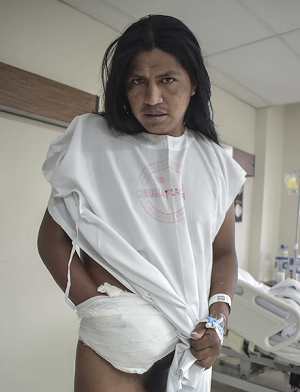Tragedy struck in Ecuador's Amazon region when a British man became the victim of a horrifying act of mob violence. The incident has sent shockwaves through both the local community and international circles, raising questions about law enforcement and vigilante justice. Such acts of brutality are rare but deeply disturbing, highlighting the dangers faced by individuals caught in situations where emotions run high and legal processes are disregarded.
The case has drawn attention to the complexities surrounding vigilantism and the potential consequences when communities take justice into their own hands. This article delves into the events leading up to the tragedy, examines the role of law enforcement during the incident, and explores the broader implications for societies grappling with similar issues. Understanding these dynamics is crucial for preventing future occurrences and ensuring justice is served fairly and legally.
Tragic Death in Ecuador: A Mob's Unyielding Pursuit
In a harrowing turn of events, an unnamed British man was lynched and burned alive in Ecuador's Amazon region. Reports indicate that the man was taken from a police station by an unstoppable mob determined to exact their version of justice. Despite the presence of law enforcement officers, the group overpowered them, dragging the individual out and setting him alight. The sheer intensity of the mob's actions underscores the dangerous power of collective anger and fear.
Local media identified the Ecuadorian man killed as Rodrigo Chavez, though it remains unclear if any arrests have been made following the brutal incident. The lack of immediate accountability raises concerns about the ability of local authorities to maintain order and protect individuals under their custody. This event serves as a stark reminder of the vulnerabilities within systems meant to uphold justice.
International bodies, including the Foreign Office, are reportedly investigating the circumstances surrounding the death. Such scrutiny is essential not only to bring those responsible to justice but also to address systemic issues that allow such tragedies to occur. The global response highlights the need for collaboration between nations to tackle the root causes of vigilante violence.
Understanding Vigilantism: A Dangerous Path to Justice
Vigilantism often arises from frustration with perceived inadequacies in the legal system. In this case, a mob baying for blood overwhelmed police efforts to safeguard the accused. Their determination to punish what they believed was a heinous crime led to the horrific outcome. While the desire for justice is understandable, the methods employed by the mob were far removed from fairness or legality.
This incident exemplifies how unchecked emotions can lead to tragic consequences. When communities feel that formal justice mechanisms fail them, they may resort to taking matters into their own hands. However, this approach frequently results in miscarriages of justice, where innocent individuals may suffer alongside the guilty. It is imperative for governments to address these grievances constructively rather than allowing them to fester.
Educating communities about the importance of due process and reinforcing trust in judicial institutions could help mitigate such incidents. By fostering transparency and accountability within law enforcement agencies, societies can work towards reducing instances of vigilante justice and promoting peace and stability.
Community Response and International Reaction
News of the British man's death spread quickly, sparking outrage and calls for action both locally and internationally. Social media platforms like X (formerly Twitter) buzzed with reactions, condemning the violent mob and demanding answers from authorities. Prominent voices, including LBC and Daily Mail Online, highlighted the severity of the situation, emphasizing the urgent need for investigations into the circumstances surrounding the killing.
As details emerged, it became apparent that the mob had stormed the police station, forcibly removing the man despite officers' attempts to intervene. This brazen act demonstrates the fragility of authority in certain regions and the challenges faced by law enforcement when confronting large, angry groups. The incident has prompted discussions on improving security measures and enhancing communication between police and the public.
While the focus remains on bringing those involved to justice, there is also a growing recognition of the broader societal factors contributing to such events. Efforts must be made to strengthen community ties, promote understanding, and ensure that everyone feels protected under the law. Only through concerted action can we hope to prevent further tragedies and build safer, more just societies.

